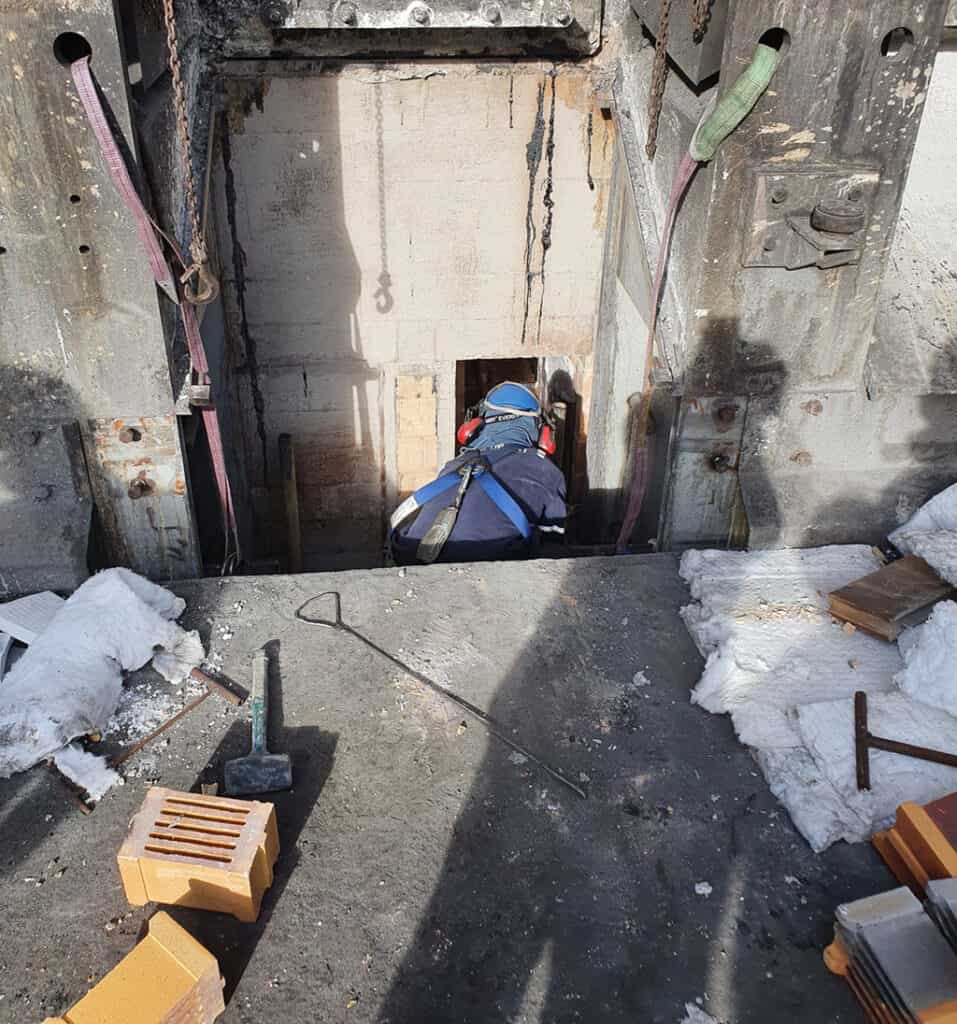
Inspection
When customers need information about the condition of their furnace and the expected life span, certain steps need to be taken before we can make a recommendation. Our services are not limited to any kind of installation including blast furnaces, hot blast stoves, coke batteries, electric arc furnaces (Six-in Line Furnaces, DC-Arc Furnaces), rotary kilns and walking beam furnaces.
We developed a program where the customer can choose the moment where he wants us to get involved. That obviously depends on the data and information already available. We divide the Inspection Services in following parts:
Data Review
The desk study will include relevant design documents, as far as available, and a review of existing operational data, material specifications and installation drawings. This allows us to understand the furnace design as well as furnace behaviour and history.
Field Inspection
Upon data review, a Field Inspection program will be presented. Including detailed discussions with the customer about the received data and a detailed site survey, which could comprise of the following:
Visual inspection during operation
During normal operation, several individual aspects as well as the plant specific interaction of those aspects need to be considered:
- Process/Design related bottlenecks
- Machine condition
- Mechanical structure
- Refractory condition
- Operational standard procedures
Visual inspection during shutdown
Most furnaces undergo a scheduled shutdown or furnace stop. During this shutdown, it is typically possible to inspect the furnace and its lining. Once cold enough, the furnace can be entered, otherwise the inspection will be conducted from a safe distance with digital camera as much as possible.
Thermal imaging
Temperature profiles of the external furnace shell can be established with an infrared scanner. This allows us to draw conclusions about the condition of the internal refractory lining. Based on the original design data, we can calculate the heat transfer and compare design shell temperatures with the actual shell temperatures.
Core drillings
Depending on the furnace type and the condition, taking a core sample helps to understand the lining condition and composition. This can be done under hot condition by taking the correct safety measures to protect the operators as well as the furnace/lining.
The cores can be visually inspected on site or sent to a laboratory for a detailed analysis of their chemical properties, like chemical attack, CO-disintegration, porosity, density etc. Those results can be compared afterwards with the design properties and the analysis helps to predict future furnace life span and the optimum material to be used.
Endoscope inspection is the method of choice if a visual inspection is not possible and there is still a need for information about the actual condition of the inside of a furnace. The water-cooled lance is equipped with a camera. It can be inserted into the furnace through existing doors, manholes, nozzles, etc. up to a depth of 0.5 to 3 meters inside the furnace.
The camera provides 360° images under an angle of 90° or 45°. This allows us to survey the walls, roof, floor etc. of each type of furnace (except for those containing liquids). The digital images will be presented to the customer, as part of the report.
Reporting
Upon collecting all data and inspection findings/results, a detailed analysis will be conducted. The outcome of the analysis will be presented to you in a Furnace Assessment Report, comprising of the following typical items:
- Summary of inspection outcome
- Overview of data collected
- Inspection findings
- Current furnace/lining condition
- Recommendations for immediate action
- Recommendations for scheduled/planned repairs
- Optional design modifications
- Optional material changes
